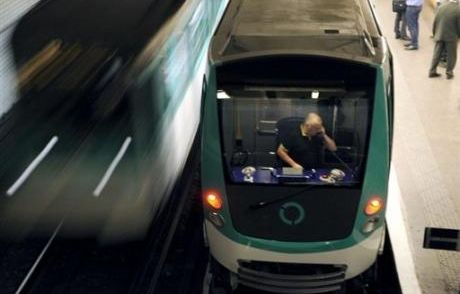Who will finance public transport in the Ile-de-France region? The question has been stirring the political sphere for a few months with the climax of the passage in early January of the price of the Pass Navigo from 75.20 to 84.10 euros. A study by the Paris Region Institute reveals a few leads, already mentioned during the Conference on the financing of Ile-de-France transport 2024-2030, which took place in January. Among them, that of an “Amazon tax”, which would levy a contribution on parcel deliveries in Île-de-France or the return in the light of the ecotax could hold the attention of Île-de-France Mobilités .
But for Grégoire de Lasteyrie, vice-president of the regulatory authority for public transport in the Ile-de-France region and Horizons mayor of Palaiseau (Essonne), “the increase in the mobility payment is essential”. Before considering any “additional” taxes, the elected official urges the State to release “this first source of financing for transport in Île-de-France, up to 5.6 billion in 2022”. This requires “authorization of the law”.
What aspects of this study called “Funding of the operation of public transport in Île-de-France” have particularly marked you?
Gregory of Lasteyrie: The subject of transport financing is absolutely crucial and this study should enable us to review all the financing measures, to assess the revenue for each and to seize the opportunities. For example, on the TICPE, it may be a good idea in tax terms, but politically, in the post-crisis “yellow vests”, it is much less so. The contribution on parcel delivery in Île-de-France is particularly interesting. Today, there is a sharp increase in the number of parcels and delivering them pollutes. This is a track that can be complementary. Imagining that the whole economy of small logistics, such as Amazon, makes it possible to finance public transport is, in my opinion, a virtuous circle.
Similarly, the eco-tax could be a complementary solution: trucks damage the roads 100 times more than other vehicles. At a time of ecological emergency, asking these trucks, the majority of which are in transit in Île-de-France, to pay a tax which would finance public transport, is a possible option.
Today, we can retain a basket of measures, which may prove necessary, but the priority is to increase the mobility payment.
How do you plan to achieve this?
Gregory of Lasteyrie: Public transport in Île-de-France is currently financed by three main sources. Local authorities, including the Region, the city of Paris and the departments, financed 1.4 billion euros in 2022, users, via tariff revenue, 3.6 billion euros and the mobility payment, this tax that pay the Ile-de-France companies, quite different from the company reimbursement, 5.6 billion euros.
In 2023, the first two were increased because today, it is necessary to finance energy costs which are exploding in particular. On the other hand, the mobility payment, which requires going through the law, has not changed. In 2022, Île-de-France Mobilités warned well in advance, but as our budget has no right to be out of balance, the only adjustment variable, at the very end, was an increase in the price of the pass. Navigo for users. Until the last moment, we hoped that the legislative lock on the mobility payment would be lifted.
We need quick answers, the Minister of Transport undertook during the assizes to present proposals by May-June. It’s late because the leads have been on the table since January. We are now waiting for concrete answers.
Why are we counting on additional needs of around 800 million euros in 2024 and up to 2.6 billion in 2030 for the financing of transport in Île-de-France?
Gregory of Lasteyrie: In addition to the rise in energy costs and inflation, the Ile-de-France transport network is expanding rapidly, with in particular 300 kilometers of additional railway lines in the years to come. However, if the Grand Paris Express, as it was originally designed, makes it possible to finance its construction, the question of the financing of its operation has not yet been decided. Lines 15, 16, 17, 18 for Île-de-France Mobilités will be 1 billion more per year to finance. This cannot only translate into additional fare revenue on the pretext that there will be more Pass Navigo holders.
Should users already expect a further significant increase in the Navigo Pass for 2024?
Gregory of Lasteyrie: Today, our subject is not the increase in the price of the Navigo Pass but the revenue that the government makes available to Île-de-France Mobilités to resolve issues of financing public transport. Don’t get the debate wrong.
In Palaiseau, in the outer suburbs, a town where I am mayor, 70% of workers go to work by car. The margin for improvement is great and the solution is to improve the supply of public transport and finance it. Particularly at a time of ecological emergency.

